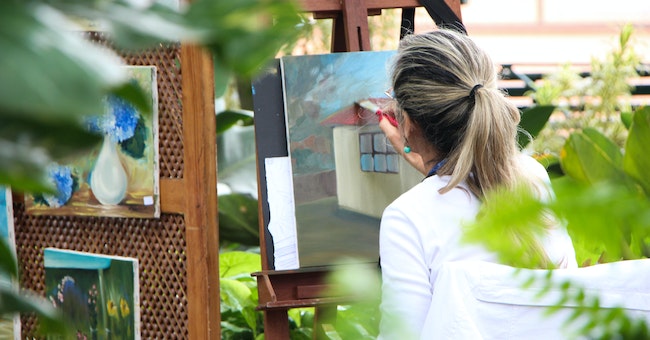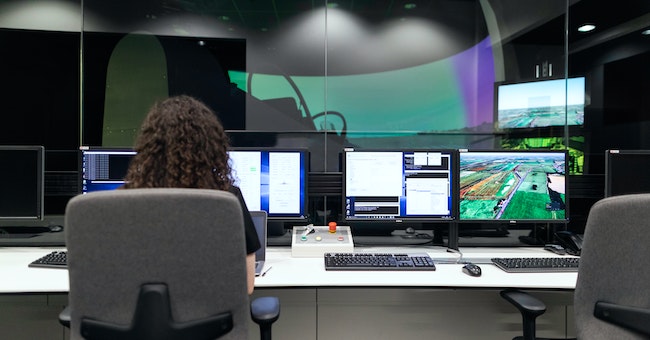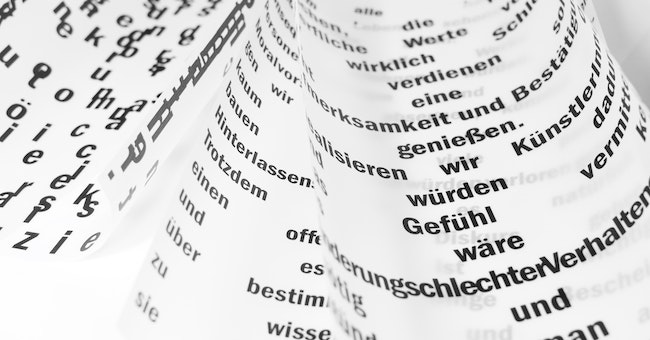Gouache Painting: An Exquisite Journey into Vibrant Creativity

Introduction
Art has been a medium of human expression for millennia, captivating hearts and minds with its vivid colors, intricate details, and evocative storytelling. Among the diverse forms of art, painting has stood the test of time, captivating artists and art enthusiasts alike. One particular painting medium that has been cherished for its unique qualities and versatility is gouache painting.
In this blog, we will embark on an exquisite journey into the world of gouache painting, exploring its history, characteristics, techniques, and the boundless creative possibilities it offers to artists. Whether you are an aspiring artist, an art lover, or someone curious about this captivating art form, join us as we uncover the beauty and charm of gouache painting.
What is Gouache Painting?
Gouache is a traditional painting medium that falls under the broader category of watercolor paints. Often referred to as "opaque watercolor," gouache is distinct from traditional transparent watercolors due to its higher pigment concentration and the addition of white pigment, typically chalk or Chinese white. This addition of white pigment gives gouache its characteristic opacity and matte finish.
Gouache is known for its vibrant and intense colors, making it a popular choice for illustrators, designers, and fine artists alike. It allows for a wide range of creative expressions, from delicate washes to bold and opaque layers, making it an incredibly versatile medium.
A Brief History of Gouache Painting
The roots of gouache painting can be traced back to ancient times, with some evidence of its use in Egyptian tomb paintings dating back thousands of years. However, the modern development of gouache as we know it today can be attributed to the artists of the Renaissance period in Europe.
During the Renaissance, artists began experimenting with various painting techniques and materials, including gouache. Its popularity surged in the 18th and 19th centuries, and it became a favored medium for miniature paintings and botanical illustrations due to its fine detail and rich color saturation.
In the 20th century, renowned artists such as Paul Klee, Marc Chagall, and Henri Matisse embraced gouache as a prominent medium in their works, further elevating its status in the art world. Today, gouache painting continues to captivate artists, and its timeless appeal remains undiminished.
Characteristics of Gouache Painting
Gouache painting has several distinct characteristics that set it apart from other painting mediums:
Opacity: The most notable characteristic of gouache is its opacity. When applied, the colors appear solid and opaque, allowing artists to cover previous layers effectively and achieve vibrant results.
Matte Finish: Gouache dries to a matte finish, lending a unique visual appeal to the artwork. The absence of gloss adds a velvety texture to the painting, enhancing its tactile charm.
Quick Drying: Gouache dries relatively quickly, allowing artists to work in multiple layers without waiting excessively between applications.
Reactivatable: Gouache can be reactivated with water even after drying, making it possible to make corrections or create interesting effects by lifting or blending colors.
Versatility: Gouache can be used on a variety of surfaces, including watercolor paper, illustration board, and even canvas. Its adaptability makes it a favorite among artists with diverse artistic styles.
Techniques in Gouache Painting
Gouache offers artists a vast array of techniques to explore and experiment with. Some of the fundamental techniques include:
Washes: Artists can create delicate washes by diluting gouache with water, allowing for subtle gradations and soft transitions between colors.
Layering: The opaque nature of gouache allows artists to layer colors, building up depth and texture in their artwork.
Dry Brush: By using a minimal amount of water and loading the brush with thick gouache, artists can achieve dry brush effects, adding texture and detail to their paintings.
Lifting: Gouache's reactivatability allows artists to lift off color with a damp brush or sponge, creating highlights and refining details.
Splattering: Artists can achieve interesting texture and visual effects by splattering gouache onto the surface using a brush or toothbrush.
Impasto: Gouache can be applied thickly, creating impasto effects that add dimension and tactile interest to the artwork.
Stippling: By using a series of small, closely spaced dots, artists can create shading and texture in their gouache paintings.
Materials Required for Gouache Painting
Getting started with gouache painting requires a few essential materials:
Gouache Paints: Invest in a set of high-quality gouache paints with a range of colors to explore the medium's full potential.
Brushes: Gouache can be applied with various brushes, including round brushes for details, flat brushes for broad strokes, and fan brushes for blending.
Watercolor Paper: Choose acid-free watercolor paper or illustration board with a suitable weight to handle the water-based nature of gouache.
Palette: A palette is essential for mixing and diluting gouache paints.
Water and Containers: Keep a container of clean water for rinsing brushes and another container for mixing washes.
Masking Tape: Use masking tape to secure the paper to the drawing board and achieve clean edges.
Paper Towels: Keep paper towels or a rag handy for blotting brushes and correcting mistakes.
Advantages and Challenges of Gouache Painting
Gouache painting offers artists a range of advantages, including:
Intense Colors: The vibrant and intense colors of gouache lend a unique and captivating quality to the artwork.
Opacity: Gouache's opacity allows artists to cover mistakes and make adjustments easily.
Versatility: Gouache can be used on various surfaces and is suitable for different artistic styles.
Dry Time: Gouache dries relatively quickly, making it suitable for artists who prefer a more immediate approach.
However, gouache painting also presents some challenges:
Layering: Layering can be challenging as the opacity of gouache may obscure the colors underneath.
Cracking: Gouache paintings can crack over time if applied too thickly or on a flexible surface.
Lightfastness: Some gouache colors may not be as lightfast as other painting mediums, leading to color fading over time.
Limited Transparency: Unlike traditional watercolors, gouache lacks the luminous transparency of transparent watercolors.
Tips for Getting Started with Gouache Painting
If you are new to gouache painting, consider these tips to begin your creative journey:
Start with a Limited Palette: Begin with a limited color palette to understand how colors interact and mix. As you gain confidence, expand your collection of colors.
Practice Color Mixing: Experiment with color mixing to create different hues and shades. Understanding color theory will enhance your painting skills.
Use Quality Paper: Invest in good-quality watercolor paper or illustration board to ensure your artwork stands the test of time.
Embrace Mistakes: Embrace the reactivatable nature of gouache and see mistakes as opportunities for creative exploration.
Explore Different Techniques: Try out various gouache painting techniques to find your unique artistic style and preferences.
Seek Inspiration: Study the works of accomplished gouache artists to gain inspiration and insights into the medium.
Recommended Online Resources for Gouache Painting
Gouache Painting for Beginners (The Course)
Gouache Painting for Beginners is a comprehensive course designed to introduce beginners to the world of painting with gouache. Through step-by-step tutorials, learners will gain confidence in color, value, and composition skills, enabling them to create stunning gouache paintings. Emphasizing artistic fundamentals, this course is ideal for aspiring artists seeking to unleash their creativity with gouache.
Course highlights:
Learn the fundamentals of gouache painting in a beginner-friendly environment.
Focus on developing color, value, and composition skills for confident artistic expression.
No paint-by-numbers approach; foster creativity and artistic confidence through hands-on practice.
Explore the versatile medium of gouache and create beautiful paintings with recommended materials.
Perfect course for aspiring artists seeking to unleash their creativity and have fun with gouache painting.
Led by Arbia Sultana, this course is a celebration of creativity and self-expression. Through a series of captivating lessons, you'll explore different techniques, styles, and themes to create stunning and unique paintings. From village festivals to rain through the window, cityscapes to fairy lights, you'll master the art of using gouache to capture the essence of each scene.
Course highlights:
Embark on a creative journey with gouache as your medium for acrylic-like and watercolor-like effects.
Explore diverse themes like village festivals, rain through the window, cityscapes, and fairy lights.
Learn techniques to capture energy, mood, and atmosphere, creating stunning and captivating paintings.
Discover your inner artist through experimentation and creativity in this enriching painting series.
3 Techniques to Combine Watercolor and Gouache in your art
This course offers new learners a comprehensive understanding of the techniques involved. Unleash your creativity as you learn to combine these mediums harmoniously, create captivating compositions, build color schemes, and paint your very own bohemian bungalow. Get ready to elevate your artistry with this exciting fusion of watercolor and gouache. Supplies needed: watercolor brushes, watercolor paper, quality watercolors, gouache, containers of water, pencil, eraser, flannel/art rags, and a Pinterest board for reference.
Course highlights:
Learn to combine watercolor and gouache to create stunning artwork.
Explore three techniques for harmonious compositions and brand new opaque colors.
Develop pattern, texture, and color schemes to paint your own bohemian bungalow.
Master layering techniques and use reference images to enhance your art.
Required supplies: watercolor brushes, paper, watercolors, gouache, pencil, eraser, and Pinterest board.
Conclusion
Gouache painting is a captivating and expressive art form that has enthralled artists for centuries. Its vibrant colors, matte finish, and versatility make it a cherished medium among illustrators, designers, and fine artists. From delicate washes to bold strokes, gouache allows artists to bring their creative visions to life with stunning results. As you embark on your gouache painting journey, remember to embrace experimentation, celebrate mistakes, and revel in the boundless possibilities this exquisite medium offers.
Whether you are a beginner or an experienced artist, gouache painting invites you to immerse yourself in a world of vivid creativity and endless inspiration. Happy painting!





